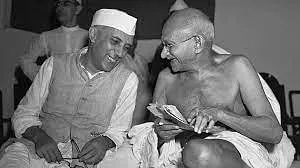Impoverished people living in numerous countries today would stand a far better chance of survival, and risk far less trauma, if weapon manufacturers such as Lockheed Martin, Boeing, General Dynamics, and Raytheon stopped manufacturing and selling death-dealing products. About three decades ago, I taught writing at one of Chicago’s alternative high schools.
It’s easy to recall some of their stories—fast-paced, dramatic, sometimes tender. I would beg my students to three-hole-punch each essay or poem and leave it in a binder on our classroom shelf, anxious not to lose the documentation of their talents and ideas.
Some of the youngsters I taught told me they were members ofgangs. Looking down from the window of my second-floor classroom, I sometimeswondered if I was watching them selling drugs in broad daylight as theyembraced one another on the street below.
Tragically, in the two years that I taught at Prologue HighSchool, three students were killed. Colleagues told me that they generallyburied three students per year. They died, primarily, from gunshot wounds. Ithink they could have survived their teenage years if weapons and ammunitionhadn’t been available.
Similarly, I believe impoverished populations of numerouscountries at war today would stand a far better chance of survival, and riskfar less trauma, if weapon manufacturers such as Lockheed Martin, Boeing,General Dynamics, and Raytheon, stopped manufacturing and selling death-dealingproducts. It would also help if the people living in countries that exportdeadly weapons were well-informed about the consequences these businessesbring.
Consider this: The 2018 U.S. Census Report tallies U.S.exports of bullets to other countries. Topping the list is $123 million-worthof bullets to Afghanistan—an eight-fold rise over the number of bullets sold in2017 and far more than the number of bullets sold to any other country.
During a recent visit to Afghanistan, I heard many peoplevoice intense fear of what would happen if civil war breaks out. It seems to methat those who manufacture bullets are doing all they can to hasten thelikelihood and deadly outcome of an armed struggle.
But rather than help people here in the United Statesunderstand conditions in countries where the U.S. conducts airstrikes,President Donald Trump is hiding the facts.
On March 6, 2019, Trump revoked portions of a 2016 executiveorder imposed by President Barack Obama requiring annual reports on the numberof strikes taken and an assessment of combatant and civilian deaths. Trump hasremoved the section of the mandate specifically covering civilian casualtiescaused by CIA airstrikes, and whether they were caused by drones or “manned”warplanes.
A U.S. State Department email message said the reportingrequirements are “superfluous” because the Department of Defense already mustfile a full report of all civilian casualties caused by military strikes.However, the report required from the Pentagon doesn’t cover airstrikesconducted by the CIA.
And last year, the White House simply ignored the reportingrequirement.
Democracy is based on information. You can’t have democracyif people have no information about crucial issues. Uninformed about militarypractices and foreign policy, U.S. citizens become disinterested.
I lived alongside civilians in Iraq during the 2003 “Shockand Awe” bombing of Baghdad. In the hospital emergency rooms I heard survivorsasking, through screams and tears, why they were being attacked. Since thattime, in multiple visits to Kabul, I have heard the same agonized question.
The majority of Afghanistan’s population consists of womenand children. When civilians in that country die because of U.S.attacks—whether within or beyond “areas of active hostilities”; whetherconducted by the CIA or the Department of Defense; whether using manned orunmanned warplanes—the attack is almost certain to cause overwhelming grief.Often the survivors feel rage and may want revenge. But many feel despair andfind their only option is to flee.
Imagine a home in your neighborhood suddenly demolished by asecret attack; you have no idea why this family was targeted, or why women andchildren in this family were killed. If another such attack happened, wouldn’tyou consider moving?
Reporting for The New York Times, Mujib Mashal recentlyinterviewed a farmer from Afghanistan’s Helmand province displaced by fightingand now unable to feed his family. “About 13.5 million people are surviving onone meal or less a day,” Mashal writes, “and 54 percent of the population livesbelow the poverty line of a $1 a day.”
Last week, an international crisis sharply escalated in a”dogfight” between India and Pakistan, both nuclear-armed states. The crisishas been somewhat defused. Media reports quickly focused on the relativemilitary strength of both countries—observing, for example, that thedilapidated state of India’s jet fighters could be a “win” for U.S. weaponsmanufacturers.
“It is hard to sell afront-line fighter to a country that isn’t threatened,” said an analyst withthe Lexington Institute. “Boeing and Lockheed Martin both have a better chanceof selling now because suddenly India feels threatened.”
A few weeks ago, Saudi Arabia’s Crown Prince Mohammed binSalman visited heads of state in Pakistan and India. Photos showed warmembraces and respectful receptions.
The CEO of Lockheed Martin, Marillyn Hewson, also embracesthe Saudi government. She serves on the boards of trustees of two Sauditechnological universities, and presides over a company that has been awarded”a nine-figure down payment on a $15 billion missile-defense system for SaudiArabia.” The Saudis will acquire new state-of-the-art weapons even as theycontinue bludgeoning civilians in Yemen during a war orchestrated by CrownPrince Mohammed bin Salman. And the Saudis will build military alliances withnuclear-armed India and Pakistan.
With both India and Pakistan possessing nuclear weapons,every effort should be made to stop the flow of weapons into the region. Butmajor weapon making companies bluntly assert that the bottom line in thedecision is their profit.
Attending funerals for young people in Chicago’s Uptownneighborhood, at the time one of the poorest in Chicago, I felt deep dismayover the profits that motivated gun runners who sold weapons to students, someof whom would be soon fatally wounded. In the ensuing decades, larger, moreambitious weapon peddlers have engendered and prolonged fighting betweenwarlords, within and beyond the United States.
How different our world could be if efforts were insteaddirected toward education, health care, and community welfare.
TRANSCEND Media Service






